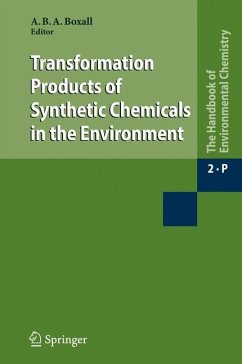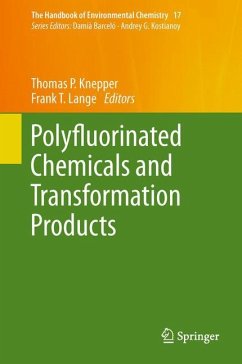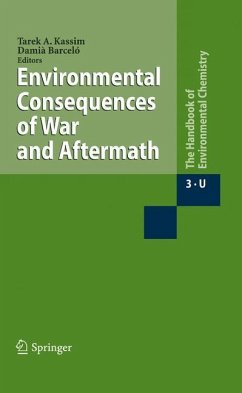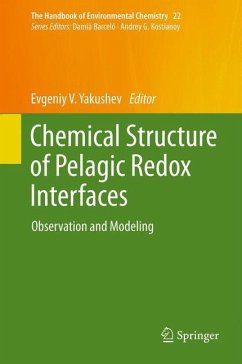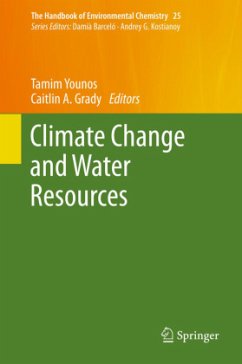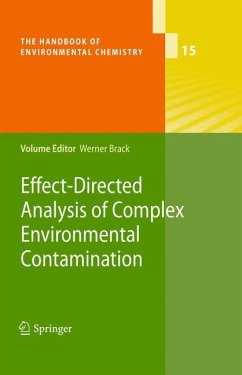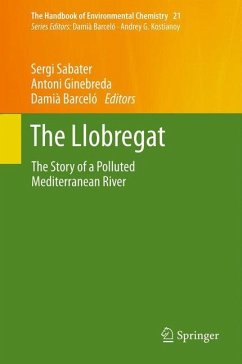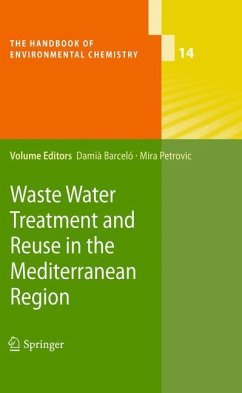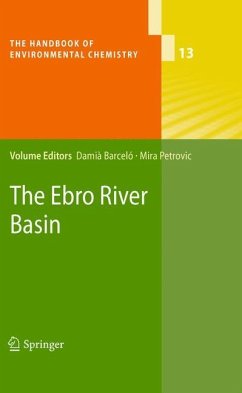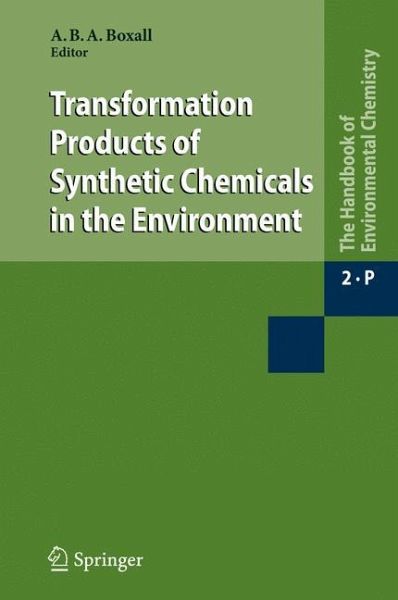
Transformation Products of Synthetic Chemicals in the Environment
Versandkostenfrei!
Versandfertig in 6-10 Tagen
151,99 €
inkl. MwSt.

PAYBACK Punkte
76 °P sammeln!
When a synthetic chemical is released into the environment it may be degraded by abiotic and biotic processes. These degradation processes usually involve a cascade of reactions resulting in the formation of a number of transformation products. While we usually know a great deal about the environmental properties, fate and effects of parent synthetic chemicals, our understanding of the impacts of transformation products is much less developed. As such, this volume brings together chapters from leading researchers in the field of transformation products in the environment and describes how these products are formed, how they move through the environment, and their environmental effects. The book also presents modelling and analytical approaches for understanding the occurrence, fate and effects of transformation products in the environment. It is of interest to scientists in academia, the chemicals industry and regulators, as well as graduate students in Environmental Chemistry and Ecotoxicology.
Following release to the environment, synthetic chemicals may be degraded by biotic and abiotic processes. The degradation of the chemical can follow a plethora of pathways and a range of other substances can be formed via thesedifferentpathways(e.g.[1]).Anumberoftermshavebeenusedforthese substances including metabolites, degradates and transformation products in this book we use the term transformation products. While we often know a lot about the environmental properties and effects of the parent synthetic chemical, we know much less about the transformationproducts. Transformationproductscanbehave very differently fromtheparent c- pound (e.g. [2]). For example, selected transformation products are much more persistent than their associated parent compound in soils, waters and sediments andsomemaybetransported aroundthelocal,regionalandglobal environmentstoadifferentextentthantheparentcompound.Transformation products can also have very different toxicities than the parent compound (e.g. [3]) and in some cases transformation products can be orders of mag- tude more toxic than their parent compound; although this situation is rare. The environmental risks of transformation products can therefore be very different than the risks of the parent compound. Thepotentialenvironmentalimpactsoftransformationproductsarerec- nised by many regulatory assessment schemes. For example, in the EU, pes- cideproducersarenotonlyrequiredtoassessthefateandeffectsoftheparent pesticide but are also required to assess the potential adverse effects of major metabolitesandminor metabolitesthat aredeemed tobeofconcern[4]. S- ilar requirements also exist for new human and veterinary pharmaceuticals and biocides (e.g. [5]). However, for many older substances and many other substance classes (e.g. industrial chemicals), data on the environmental risks of transformationproductscan be limited or non-existent.





